
Visual Ethnography
Scope & Guideline
Bridging Visual Representation and Cultural Insight
Introduction
Aims and Scopes
- Visual Methodologies:
The journal consistently explores innovative visual methodologies in ethnographic research, including photography, film, and digital media, to document and analyze cultural practices. - Cultural Representation:
A core area of focus is the representation of marginalized voices and communities through visual narratives, aiming to challenge dominant discourses and provide a platform for underrepresented perspectives. - Embodiment and Identity:
The journal often delves into themes of embodiment, identity, and the politics of representation, examining how visual culture influences perceptions of gender, ethnicity, and social status. - Interdisciplinary Approaches:
Visual Ethnography encourages interdisciplinary collaboration, drawing insights from anthropology, sociology, art, and media studies to enrich ethnographic practices. - Ethics of Representation:
A significant concern within the journal is the ethical implications of visual representation, particularly regarding consent, authorship, and the responsibilities of the researcher towards their subjects.
Trending and Emerging
- Intersectionality in Visual Research:
There is a growing focus on intersectionality, particularly how various aspects of identity (e.g., race, gender, sexuality) intersect in visual narratives, allowing for a nuanced understanding of complex social dynamics. - Digital Ethnography:
The rise of digital technologies has led to an increase in publications exploring digital ethnography, including social media and online platforms as sites of cultural production and representation. - Art as Research:
A trend towards integrating art practices within ethnographic research has emerged, where artistic methods serve as both a mode of inquiry and a means of representation, emphasizing the creative process in understanding culture. - Participatory Visual Methods:
Participatory approaches that engage communities in the research process are increasingly prevalent, reflecting a commitment to collaborative methodologies that empower subjects and promote co-creation of knowledge. - Health and Well-Being:
Themes related to health, well-being, and the visual representation of lived experiences in these contexts are gaining traction, highlighting the role of visual ethnography in addressing social issues and advocating for marginalized groups.
Declining or Waning
- Historical Ethnography:
There has been a noticeable decline in publications focusing on historical ethnographic practices, such as the analysis of photography and film from earlier centuries, indicating a potential shift towards contemporary issues. - Traditional Ethnographic Methods:
The emphasis on traditional ethnographic methods has waned, with fewer articles discussing conventional fieldwork techniques in favor of more visual and participatory approaches. - Single-Disciplinary Focus:
The journal's trend towards interdisciplinary work has led to a decline in articles that strictly adhere to a single disciplinary lens, such as anthropology alone, reflecting a broader push for collaboration across fields. - Static Representations:
There appears to be less emphasis on static visual representations such as traditional photography, as the journal increasingly prioritizes dynamic, participatory, and multimedia approaches.
Similar Journals
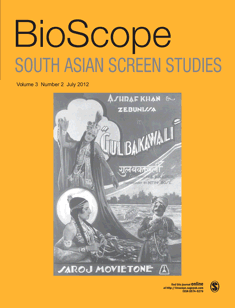
Bioscope-South Asian Screen Studies
Transforming Perspectives on South Asian MediaBioscope-South Asian Screen Studies is an influential journal dedicated to advancing the field of screen studies in the South Asian context, published by SAGE Publications India Pvt Ltd. With an ISSN of 0974-9276 and an E-ISSN of 0976-352X, this journal spans a convergence of scholarly research from 2010 to 2024, providing a significant platform for interdisciplinary dialogue. Holding a Q3 rating in Communication and a Q2 rating in Visual Arts and Performing Arts in the 2023 category quartiles, it ranks 212th in its field on Scopus, reflecting its vital contribution to academic discourse. Bioscope aims to explore and critically analyze the rich tapestry of South Asian cinema, media, and performance arts, offering researchers, professionals, and students a valuable resource for deepening their understanding of regional and global cinematic narratives. Readers will find insightful articles that probe the cultural, social, and political dimensions of screen studies, making this journal an essential reference for anyone engaged in the evolving landscape of South Asian visual culture.
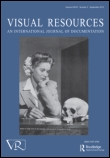
Visual Resources
Innovating Research in Museology and Performing ArtsVisual Resources, an esteemed journal published by Routledge Journals, Taylor & Francis Ltd, serves as a vital platform for scholarly research in the fields of Museology and Visual Arts and Performing Arts. With an ISSN of 0197-3762 and an E-ISSN of 1477-2809, this journal has navigated the academic landscape since its inception in 1980, continuing to amplify critical dialogues up to 2024. Positioning itself within category quartiles as Q3 for both museology and visual arts, the journal ranks at #302/667 in the Visual Arts and Performing Arts category and #41/83 in Museology according to Scopus, reflecting a significant yet competitive standing. Although not designated as Open Access, the publication remains accessible through institutional subscriptions, catering to a diverse audience of researchers, professionals, and students. By disseminating pioneering research and innovative methodologies pertinent to visual culture and museum practices, Visual Resources plays an indispensable role in advancing knowledge in its disciplines and connects academia with contemporary practice.
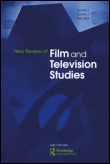
New Review of Film and Television Studies
Fostering Interdisciplinary Insights in Visual ArtsNew Review of Film and Television Studies, published by Routledge Journals, Taylor & Francis Ltd, stands as a vital platform for scholars and practitioners engaged in the dynamic fields of film and television studies within the United Kingdom. This journal, which has been in circulation since 2010 and will continue through 2024, provides a rigorous academic forum for contemporary research, critical analysis, and innovative discourse surrounding visual storytelling. With an impressive Scopus rank placing it in the 66th percentile for Visual Arts and Performing Arts, and a respectable Q2 categorization, the journal fosters an interdisciplinary approach, bridging communication and cultural studies. While the journal does not currently operate under an open access model, it remains an invaluable resource for researchers, students, and professionals aiming to understand and influence the evolving landscape of film and television in our digital age. As it navigates the intersection of media and society, New Review of Film and Television Studies is essential reading for those looking to advance their knowledge and contribute to the ongoing scholarly conversation.
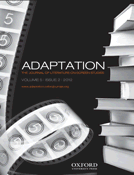
Adaptation-The Journal of Literature on Screen Studies
Exploring the Intersection of Storytelling and Screen.Adaptation: The Journal of Literature on Screen Studies, published by Oxford University Press, stands at the forefront of interdisciplinary scholarship, blending the realms of literature, visual arts, and performing arts. This esteemed journal addresses the evolving relationship between literature and its adaptation into various screen formats, providing a vital platform for researchers, professionals, and students interested in the adaptation process across different media. With a commendable 2023 impact factor reflected by its recognition in the Q1 quartile categories for Literature and Literary Theory as well as Visual Arts and Performing Arts, it ranks in the top tiers of its field, showcasing its influence and reach. The journal is dedicated to exploring theoretical and practical approaches to adaptation, ensuring that voices from diverse perspectives are heard. Although it operates under traditional access models, the insights offered in its publications are invaluable for those looking to deepen their understanding of how literature translates into screen narratives. With coverage spanning from 2010 to 2024, Adaptation continues to be a pivotal reference point for innovative scholarship and critical discourse.
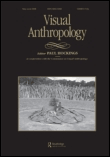
Visual Anthropology
Decoding Society Through Visual NarrativesVisual Anthropology is a distinguished journal published by Routledge Journals, Taylor & Francis Ltd in the United Kingdom. With an ISSN of 0894-9468 and E-ISSN 1545-5920, this journal focuses on the intersection of visual media and anthropological research, exploring the ways in which visual representations influence cultural practices and perceptions. Since its inception in 1987, Visual Anthropology has contributed significantly to the fields of Anthropology and Cultural Studies, earning a Q2 rank in both categories as of 2023. With a solid impact factor and strategic indexing, the journal maintains a vital place for scholars seeking to understand the visual dimensions of human behavior and societal structures. Although it operates under a traditional subscription model, its rigorous peer-review process ensures the dissemination of high-quality research. The journal invites researchers, professionals, and students alike to engage with cutting-edge studies that bridge visual culture and anthropological inquiry.

Film Fashion & Consumption
Exploring the Nexus of Visual Culture and Consumer BehaviorFilm Fashion & Consumption is an innovative academic journal published by INTELLECT LTD, focusing on the interdisciplinary exploration of the intertwined domains of film, fashion, and cultural consumption. Established in 2019, this journal has rapidly become a significant platform for scholars, practitioners, and students alike, contributing to critical discussions on how visual culture shapes consumer behaviors and social narratives. With an impact factor reflecting a growing influence in the fields of Communication, Cultural Studies, History, and Visual Arts, it holds respectable positions in its respective quartiles as of 2023. Although it is not an open-access journal, it provides essential insights and research articles that inform and challenge prevailing notions around media and style. The journal's Scopus rankings highlight its relevance, particularly within the realms of Visual Arts and Cultural Studies, making it a valuable resource for anyone engaged in the analysis of contemporary visual trends.

Journal of Italian Cinema and Media Studies
Unveiling the Artistry of Italian Cinema through Scholarly InsightThe Journal of Italian Cinema and Media Studies, published by INTELLECT LTD, is a premier academic journal dedicated to the exploration and critical analysis of Italian cinema and media. Since its inception in 2013, the journal has contributed significantly to the discourse surrounding the intersections of film, culture, and society, making it a vital resource for researchers and professionals alike. With an impressive span of converged years through 2024 and categorized in various quartiles, such as a Q1 ranking in Visual Arts and Performing Arts, the journal stands out in its field. Although it does not currently offer open access, the rigorous scholarship it publishes is accessible to a wide audience, contributing to ongoing dialogues in communication and cultural studies. The journal's impact is further reflected in its Scopus rankings, positioning it within the 64th percentile in Visual Arts and Performing Arts and the 21st percentile in Communication. As a critical avenue for scholarly exchange and creative inquiry, the Journal of Italian Cinema and Media Studies is essential for anyone engaged in the study of media, culture, and the arts.

Asian Diasporic Visual Cultures and the Americas
Innovating Perspectives on Race, Ethnicity, and Visual PracticesAsian Diasporic Visual Cultures and the Americas is a pioneering journal published by BRILL, dedicated to exploring the intersections of visual culture, identity, and diaspora within the context of the Americas. With an ISSN of 2352-3077 and E-ISSN of 2352-3085, this journal has established itself as a significant resource for academics, researchers, and students interested in the visual arts and their broader social implications. Since its inception in 2015, the journal has been committed to fostering interdisciplinary dialogue, providing a platform for innovative research that examines how Asian diasporic communities express their identities through visual mediums. Despite its relatively recent establishment, it endeavors to challenge and expand the narratives related to visual arts in a diverse and globalized world. Though the journal currently does not offer open access options, it remains a vital asset for those engaged in understanding the critical dynamics of race, ethnicity, and culture in contemporary visual practices. Converging insights from both the arts and social sciences, this journal invites contributions that illuminate the complexities of diasporic experiences, making it a pertinent choice for those aiming to contribute to this evolving field.
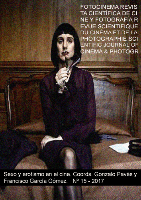
Fotocinema-Revista Cientifica de Cine y Fotografia
Advancing Knowledge in Cinema and PhotographyFotocinema-Revista Cientifica de Cine y Fotografia is a leading open-access journal published by FOTOCINEMA since 2014, dedicated to the academic exploration of cinema and photography. Based in Spain, this journal serves as a vital platform for researchers, professionals, and students, fostering innovative discourse in the fields of Visual Arts, Performing Arts, and History. With an impressive Q2 rank in both History and Visual Arts, as well as a Q4 rank in Communication in 2023, Fotocinema reflects a commitment to high-quality scholarship, backed by Scopus rankings that highlight its growing influence within the academic community. By offering open access to its content, the journal ensures that significant research is available to a broader audience, encouraging collaboration and knowledge sharing across disciplines. As it continues its converged publication run from 2019 to 2024, Fotocinema stands at the forefront of cinematic and photographic studies, providing an essential resource for those dedicated to understanding the intricate relationships between visual media and society.

Visual Communication
Fostering Innovative Dialogues in Visual Arts.Visual Communication, published by SAGE Publications Inc, is a leading journal in the fields of Communication and Visual Arts and Performing Arts, recognized for its significant contribution to theoretical advancements and empirical research. With an impressive impact factor and ranked in the Q2 quartile for Communication and Q1 for Visual Arts and Performing Arts, this journal attracts a diverse audience of researchers, professionals, and students dedicated to exploring the multifaceted nature of visual communication. Spanning from 2002 to 2024, the journal publishes high-quality articles that delve into the intricate relationship between visual culture and communication practices. It consistently ranks favorably within Scopus, placing in the 97th percentile for Visual Arts and Performing Arts and the 76th percentile for Communication, making it a vital resource for those seeking to advance their understanding of visual discourse. While the journal is not open access, its subscription model ensures rigorous peer review, thereby maintaining high academic standards. The global reach of Visual Communication solidifies its role as an essential platform for innovative dialogue and scholarship within the academic community.